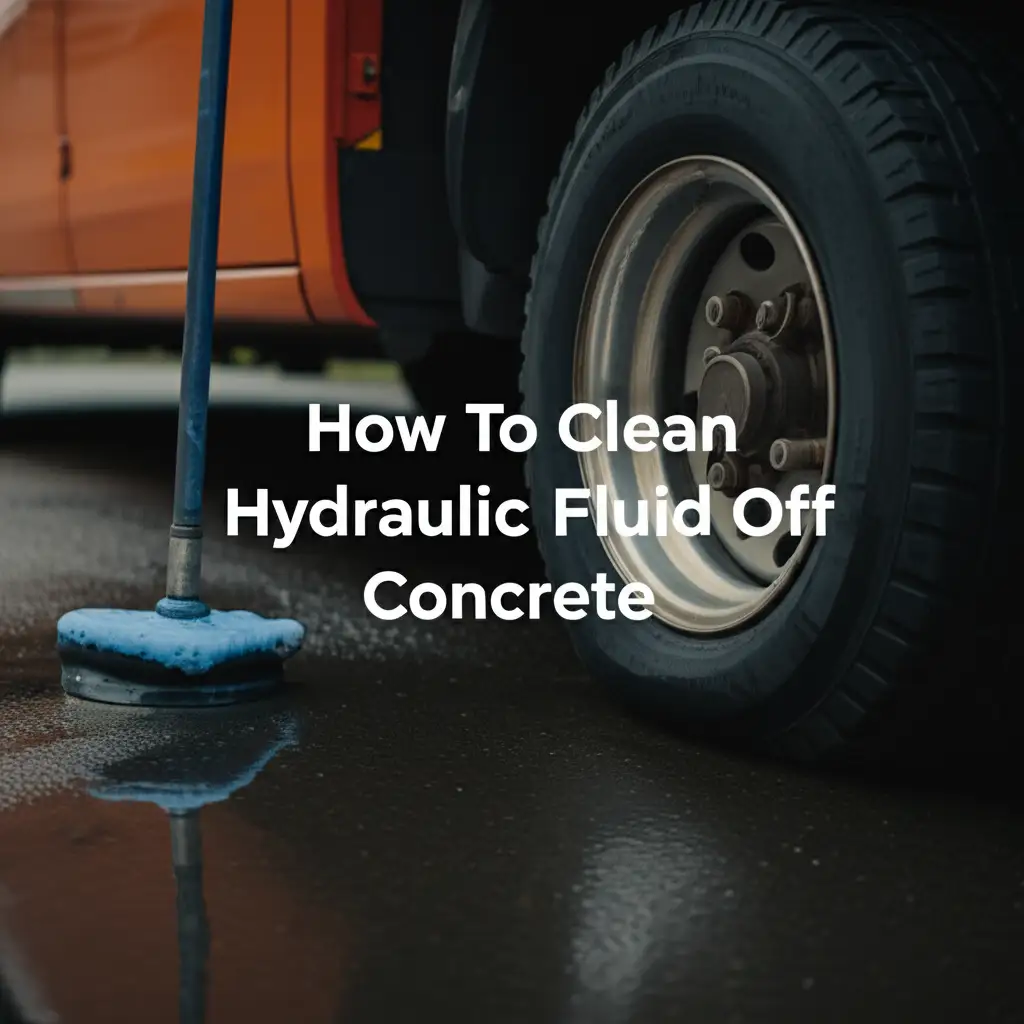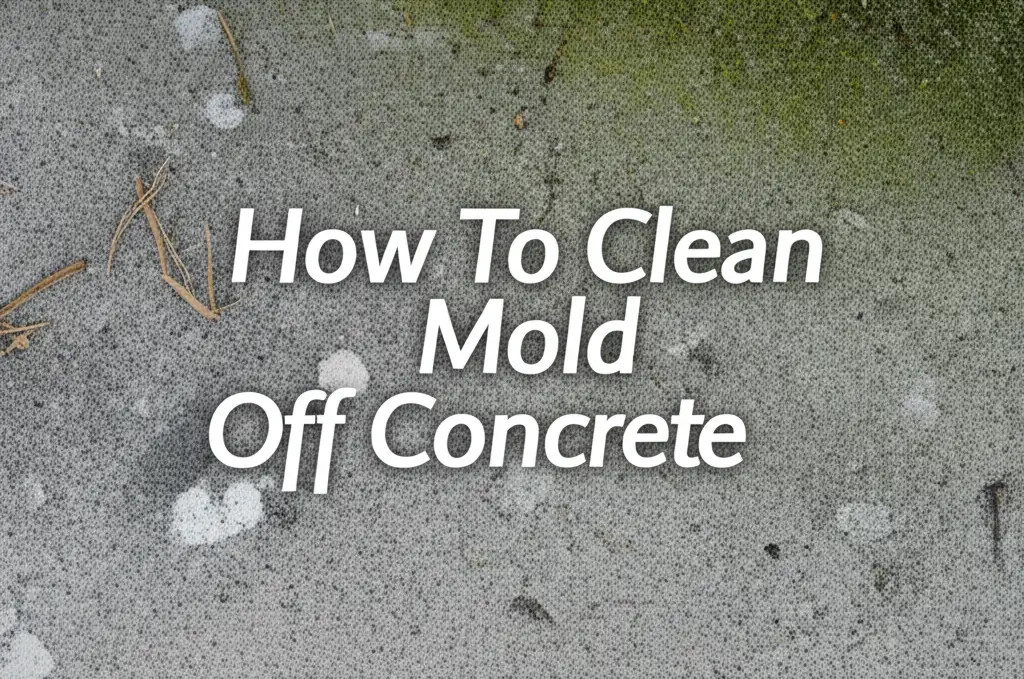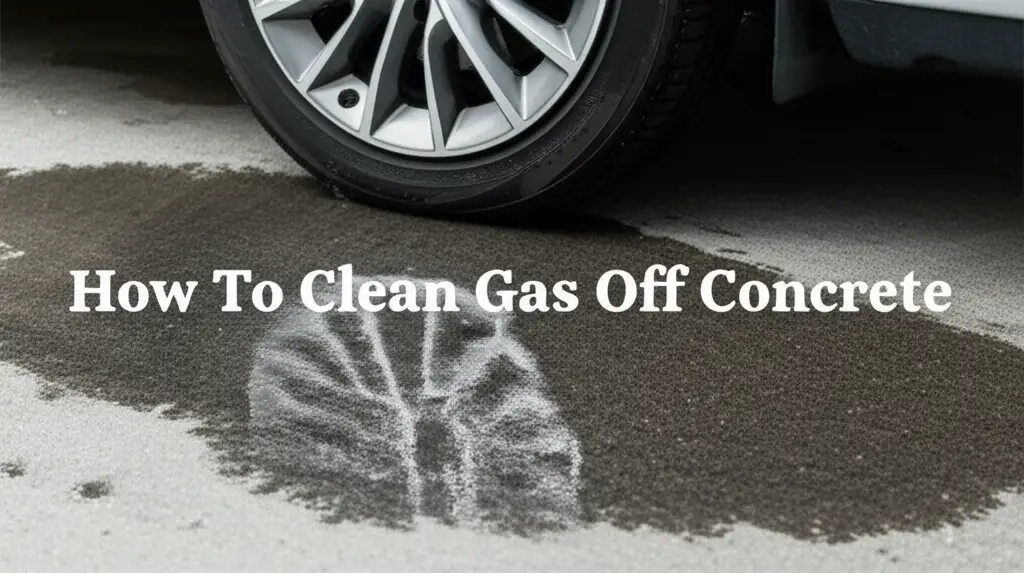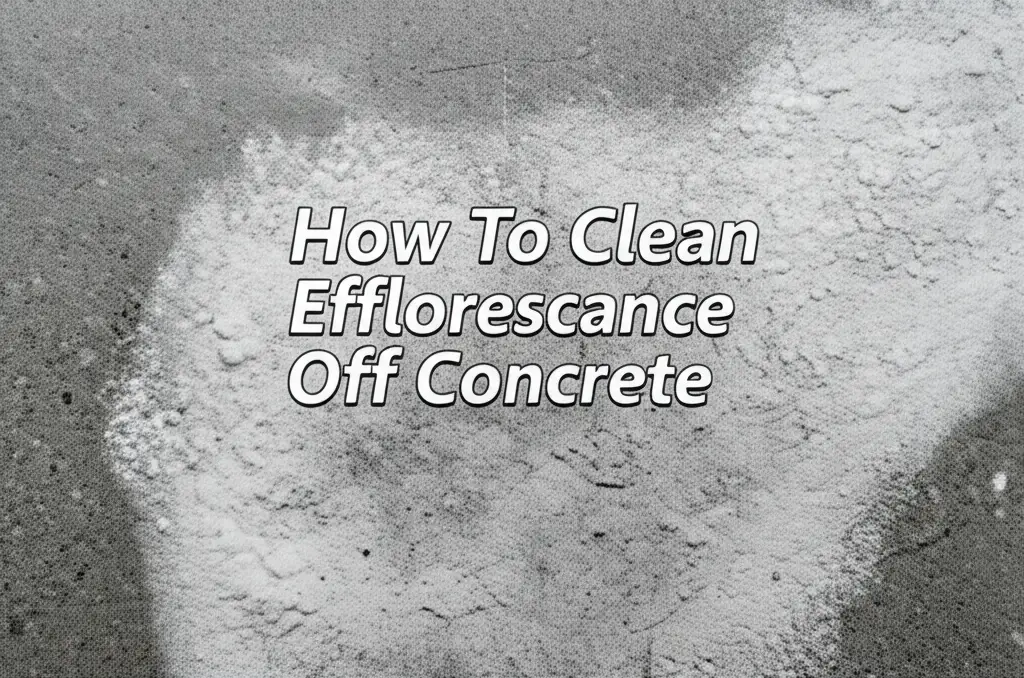· Concrete Cleaning · 17 min read
How To Clean Hydraulic Fluid Off Concrete

How To Clean Hydraulic Fluid Off Concrete: A Comprehensive Guide
Hydraulic fluid spills on concrete are a common problem. These spills leave dark, unsightly stains. They also create a slick surface, which is a safety hazard. Over time, hydraulic fluid can penetrate deep into concrete. This makes removal more challenging. But do not worry; cleaning these stains is possible. I will guide you through effective methods to restore your concrete.
This article provides a complete guide. We will cover immediate steps for fresh spills. We will also tackle stubborn, set-in stains. You will learn about the right tools and cleaning agents. We will discuss safety measures and eco-friendly options. My goal is to help you get your concrete clean.
Takeaway
- Act fast on fresh hydraulic fluid spills to prevent deep penetration.
- Always prioritize safety by wearing appropriate protective gear.
- Use absorbents like cat litter first, then apply suitable degreasers.
- For old stains, consider a poultice method for deep cleaning.
- Properly dispose of all contaminated materials and cleaning solutions.
To effectively clean hydraulic fluid off concrete, first absorb as much of the fresh spill as possible using absorbent materials like cat litter or sawdust. Next, apply a strong degreaser or specialized concrete cleaner, allowing it to penetrate the stain. Scrub vigorously with a stiff brush, then rinse thoroughly with water, repeating steps for stubborn marks.
Immediate Response to Hydraulic Fluid Spills
When hydraulic fluid spills on concrete, acting quickly makes a big difference. Fresh spills are much easier to clean than old, dried ones. The longer the fluid sits, the deeper it soaks into the concrete’s pores. This causes a more permanent stain. I know you want to tackle this right away.
Your first step should always be to contain the spill. Grab any absorbent material you have. Cat litter, sawdust, or even sand works well. Pour a thick layer directly over the entire spill. This helps soak up the liquid before it spreads or seeps further. Let the absorbent material sit for several hours, or even overnight, for maximum absorption. Then, sweep up the saturated material. Make sure you dispose of it properly. You do not want it to harm the environment.
Safety First: Protecting Yourself and Your Environment
Working with hydraulic fluid and strong cleaners requires care. Safety is not an option; it is a must. I always put on my protective gear before starting any cleaning task like this.
Wear heavy-duty gloves to protect your hands from chemicals. Safety glasses or goggles are also essential to shield your eyes from splashes. If you are using strong chemicals, consider wearing a respirator. This prevents you from inhaling harmful fumes. Ensure good ventilation in your work area. Open garage doors or windows. Do your cleaning on a clear day if outdoors. Always read the labels on your cleaning products. Follow all manufacturer safety instructions. This helps keep you safe during the cleaning process.
Essential Tools and Cleaning Agents for Concrete
Cleaning hydraulic fluid off concrete needs the right supplies. Using the correct tools makes the job easier and more effective. I have learned that a good setup saves time and effort. You want to make sure you have everything ready before you start.
First, you need absorbent materials. As I mentioned, cat litter, sawdust, or shop rags are excellent for soaking up fresh spills. Next, you will need a stiff-bristled brush. A wire brush works well for tougher stains, but be careful not to damage the concrete surface. You will also need a bucket, warm water, and a hose for rinsing. For some stains, a pressure washer can be very helpful. Remember to use the right nozzle and pressure settings to avoid harming your concrete. You can learn more about cleaning concrete effectively, even how to clean concrete patio without pressure washer, if you prefer.
Choosing the Right Cleaning Agents
Selecting the right cleaning agent is key to success. Different types of cleaners work for different stain severities. For hydraulic fluid, you generally need a degreaser.
- Household Degreasers: For lighter, fresh stains, strong dish soap or laundry detergent can work. Mix it with warm water to create a soapy solution. This is a good starting point for less severe spills.
- Commercial Concrete Cleaners/Degreasers: These products are specially formulated for oil and grease stains on concrete. They penetrate deeply to break down the fluid. Look for products designed for automotive oil or heavy machinery fluid. Follow the product instructions carefully for the best results.
- Poultice Materials: For old, deep stains, you might need to make a poultice. This involves mixing an absorbent material, like diatomaceous earth or Fuller’s earth, with a solvent or degreaser. This paste draws the stain out of the concrete over time. This method is often used for other stubborn concrete marks, such as how to clean wood stain off concrete or even challenging issues like how to clean battery acid off concrete.
- Tri-Sodium Phosphate (TSP): TSP is a very strong cleaner. It is effective for tough oil and grease stains. However, it is highly caustic and requires careful handling. Always wear full protective gear when using TSP. Also, be aware that it can be harmful to plants if it drains into soil. Use it sparingly and with caution.
- Baking Soda and Vinegar: For a more eco-friendly approach, baking soda and vinegar can offer some help with lighter stains. While not as powerful as commercial degreasers, they can lift minor oil residue. You can combine this with other natural cleaning techniques like how to clean with vinegar and baking soda for other household tasks.
Always test any cleaning agent on a small, inconspicuous area of your concrete first. This ensures it does not discolor or damage the surface. I always do this to avoid unexpected problems.
Step-by-Step Cleaning for Fresh Hydraulic Fluid Spills
Cleaning fresh hydraulic fluid spills is a race against time. The quicker you act, the less the fluid soaks in. This makes your job much easier. I always try to keep absorbent materials handy for unexpected spills. Having a plan makes a big difference.
- Blot and Absorb: Your first step is to absorb as much fluid as possible. Pour a generous amount of absorbent material directly onto the spill. Cat litter, sawdust, or even baking soda works well. Spread it evenly over the entire stained area. Let it sit for several hours, ideally overnight. The material will soak up the fluid.
- Sweep Up Absorbent: After the material has absorbed the fluid, sweep it up. Use a stiff broom and a dustpan. Make sure to collect all the saturated material. Dispose of it properly according to local regulations. Do not let it enter storm drains.
- Apply Degreaser: Now it’s time for the degreaser. Pour or spray your chosen concrete degreaser directly onto the remaining stain. Make sure the entire stain is covered. Let the degreaser sit for the time recommended by the manufacturer. This allows it to penetrate and break down the oil.
- Scrub the Stain: Use a stiff-bristled brush or a wire brush to scrub the stained area. Work the degreaser into the concrete. Apply firm pressure and scrub in circular motions. You will see the stain starting to lift. This elbow grease is crucial for effective removal.
- Rinse Thoroughly: Once you have scrubbed the stain, rinse the area with plenty of clean water. A garden hose with a strong nozzle works well. For larger areas or stubborn spots, a pressure washer can provide a more powerful rinse. Make sure all the cleaning solution and lifted oil are washed away.
- Repeat if Necessary: Sometimes, one cleaning cycle is not enough. If you still see a faint stain after the area dries, repeat the process. Apply more degreaser, scrub, and rinse. Patience is key when dealing with stubborn stains. You might need to do this a few times to get it completely clean.
Tackling Old, Set-In Hydraulic Fluid Stains
Old hydraulic fluid stains are more challenging than fresh ones. The fluid has had time to penetrate deep into the concrete’s pores. Simple degreasers might not be enough. But do not give up hope. Specialized methods can still lift these stubborn marks. I have seen success with these techniques on many occasions.
One of the most effective methods for old stains is the poultice method. A poultice is a paste that draws the stain out of the concrete. It works by absorbing the oil as it dries. This method can also be helpful for other tough marks, such as how to clean tire marks off concrete that have been there for a while.
Creating and Applying a Poultice
- Prepare the Surface: First, clean the stained area of any loose dirt or debris. You want the poultice to make direct contact with the stain.
- Mix the Poultice: You will need an absorbent material and a chemical solvent or degreaser.
- Absorbent Material: Diatomaceous earth, Fuller’s earth, or even fine sawdust are good choices. Baking soda or powdered laundry detergent can also work.
- Solvent/Degreaser: Use a strong concrete degreaser, mineral spirits, or acetone. Mix the absorbent material with the solvent to form a thick, peanut-butter-like paste. The consistency is important; it should be spreadable but not too watery.
- Apply the Poultice: Spread a thick layer of the poultice over the entire hydraulic fluid stain. Make sure the paste is about a quarter to a half-inch thick. Extend the poultice slightly beyond the edges of the stain.
- Cover the Poultice: To prevent the solvent from evaporating too quickly, cover the poultice with plastic wrap. Tape the edges of the plastic wrap down to seal it. This keeps the poultice moist and allows it to work effectively.
- Allow to Dry: Let the poultice dry completely. This can take 24 to 72 hours, depending on humidity and temperature. As the poultice dries, it draws the hydraulic fluid out of the concrete and into the absorbent material.
- Remove and Clean: Once the poultice is dry, it will become powdery or crumbly. Scrape it off the concrete using a plastic scraper or stiff brush. Sweep up the dried material and dispose of it properly.
- Rinse and Evaluate: Rinse the area thoroughly with water. Let it dry completely. Inspect the stain. You may need to repeat the poultice application for very old or stubborn stains. It often takes multiple applications to achieve full removal. I have found persistence pays off with these deeply embedded marks.
Advanced Cleaning Techniques and Professional Help
Sometimes, even with the best efforts, hydraulic fluid stains persist. This is especially true for very old or extremely large spills. In these situations, advanced cleaning techniques or professional help might be necessary. I always consider these options when DIY methods fall short.
Pressure Washing for Stubborn Stains
A pressure washer can be a powerful tool for cleaning concrete. The high-pressure water stream can blast away grime and some stains. For hydraulic fluid, it works best after you have absorbed the bulk of the oil and applied a degreaser. The pressure washer helps force the cleaning solution deeper into the concrete. It also provides a strong rinse to flush out the lifted oil.
- Preparation: Make sure the area is clear of debris. Apply your chosen concrete degreaser first, letting it sit as directed.
- Technique: Use a wide-angle nozzle (like a 25-degree or 40-degree tip) to avoid damaging the concrete. Keep the wand moving constantly. Do not focus the stream on one spot for too long. Work in small sections, overlapping your passes.
- Safety: Always wear safety glasses and sturdy shoes when operating a pressure washer. The force of the water can cause injury. Keep pets and children away from the work area.
- Limitations: While effective, a pressure washer alone may not remove deeply set stains. It is usually best used in conjunction with a good degreaser.
When to Call a Professional
There are times when a professional concrete cleaning service is the best option. This might be the case if:
- The stain is very large: Cleaning a huge area can be time-consuming and labor-intensive for one person.
- The stain is extremely old and deeply set: Professionals have access to stronger chemicals and specialized equipment not available to the general public. They might use hot water pressure washers or industrial-strength degreasers.
- You lack the proper equipment: If you do not have a pressure washer or the right safety gear, a professional service saves you the cost of purchasing them.
- You are concerned about environmental impact: Professionals know how to manage and dispose of chemical waste properly. They can ensure that hydraulic fluid and cleaning solutions do not contaminate the environment.
- The concrete is delicate or sealed: Some concrete surfaces require specific care. Professionals understand different concrete types and finishes. They can clean without causing damage.
Hiring a professional might save you time and ensure a thorough cleaning. They have the expertise to handle even the toughest hydraulic fluid stains on concrete.
Preventing Future Hydraulic Fluid Stains on Concrete
Preventing stains is always better than cleaning them. Taking proactive steps can save you a lot of effort and expense in the long run. I always advise thinking about prevention when dealing with spills. It helps keep your concrete looking its best.
Regular Maintenance and Good Practices
- Use Absorbent Mats: Place absorbent mats or drip trays under vehicles or machinery that might leak hydraulic fluid. These mats catch drips and spills before they reach the concrete. They are especially useful in garages, workshops, and industrial settings. Replace them regularly as they become saturated.
- Promptly Address Leaks: Do not ignore small leaks from equipment or vehicles. Even a tiny drip can lead to a significant stain over time. Fix the source of the leak as soon as you notice it. Regular maintenance checks on your machinery can help identify potential leaks early.
- Apply Concrete Sealant: Sealing your concrete can provide an extra layer of protection. A concrete sealant creates a barrier that makes the surface less porous. This helps prevent liquids, including hydraulic fluid, from soaking in deeply. Sealants also make future cleaning easier.
- Types of Sealants: Choose a penetrating sealant for better stain resistance or a topical sealant for a protective film.
- Application: Apply sealant to clean, dry concrete. Follow the manufacturer’s instructions for application and reapplication frequency.
- Keep Absorbent Materials Handy: Always have a supply of absorbent materials, like cat litter or shop towels, ready. This allows for immediate action if a spill occurs. Quick absorption is your first line of defense against deep stains.
- Educate Users: If you have employees or others who use the area, educate them on the importance of spill prevention and immediate cleanup. A shared understanding helps maintain a clean environment.
By implementing these preventive measures, you can significantly reduce the likelihood of future hydraulic fluid stains. This keeps your concrete cleaner and safer. I find that a little prevention goes a long way.
Eco-Friendly Cleaning Options and Proper Disposal
Cleaning hydraulic fluid off concrete does not have to harm the environment. There are eco-friendly options available. More importantly, proper disposal of contaminated materials is crucial. I always try to minimize my environmental footprint when cleaning. It is a responsibility we all share.
Green Cleaning Alternatives
For lighter hydraulic fluid stains or for those who prefer less harsh chemicals, some natural options can help. These are generally less effective on deeply set, old stains, but they are worth trying for fresh spills or maintenance.
- Baking Soda and Water Paste: Baking soda is a mild abrasive and an absorbent. Make a thick paste with baking soda and a small amount of water. Apply it to the stain, let it sit for a few hours, then scrub with a stiff brush and rinse. This method is safe and effective for minor oil residue.
- Citrus-Based Cleaners: Many commercial degreasers use d-limonene, a natural solvent derived from citrus peels. These cleaners are biodegradable and often smell pleasant. They work by breaking down oil and grease. Look for these products at your local hardware or cleaning supply store.
- White Vinegar: While not as strong as specialized degreasers, a mixture of white vinegar and water can help with very fresh, minor oil residue. Vinegar is acidic and can help lift some stains. Apply, let it sit, then scrub and rinse. It can also be used for how to clean shower head with vinegar or general cleaning.
Safe and Responsible Disposal
Proper disposal of hydraulic fluid and contaminated cleaning materials is paramount. Hydraulic fluid is a hazardous waste. It can pollute soil and water if not handled correctly. Never pour hydraulic fluid or contaminated rinse water down storm drains or onto the ground.
- Absorbent Materials: Place all saturated absorbent materials (cat litter, sawdust, rags) into heavy-duty plastic bags. Seal the bags tightly.
- Wastewater: Collect all rinse water if possible, especially when using strong chemical degreasers or pressure washing. Use a shop vac or absorbent booms to collect the water. Do not let it run off into storm drains.
- Local Regulations: Contact your local waste management facility or recycling center. Ask about their guidelines for disposing of hazardous waste. They will provide instructions on how to properly discard contaminated absorbents and wastewater. Some facilities have specific collection days for household hazardous waste. Industrial users might need to follow specific industrial waste disposal protocols.
- Never Mix: Do not mix hydraulic fluid with other chemicals or oils unless specifically instructed by a waste disposal expert. This can create dangerous reactions.
By choosing eco-friendly options and disposing of waste properly, you protect yourself, your property, and the environment. I always make sure I follow these steps to be a responsible cleaner.
Frequently Asked Questions (FAQ)
What is hydraulic fluid made of?
Hydraulic fluid is typically oil-based or water-based. It is a non-compressible fluid used to transmit power in hydraulic systems. Its composition allows it to lubricate components, transfer heat, and prevent rust. This fluid helps machinery move and operate smoothly under pressure.
How do I remove a dark, old hydraulic fluid stain?
For dark, old stains, I recommend the poultice method. Mix an absorbent material like diatomaceous earth with a strong solvent or degreaser to form a paste. Apply it thickly over the stain, cover with plastic, and let it dry completely. This process draws the deep-set fluid out of the concrete.
Can baking soda clean hydraulic fluid?
Baking soda can help with fresh or very light hydraulic fluid stains. It acts as an absorbent and a mild abrasive. You can make a paste with baking soda and water, apply it, scrub, and rinse. However, for stubborn or deeply absorbed stains, you will need a stronger degreaser or specialized concrete cleaner.
Is hydraulic fluid harmful to concrete?
Hydraulic fluid itself is not directly corrosive to concrete like an acid. However, it can penetrate the concrete’s pores, leading to dark, unsightly stains. If left uncleaned, it can also degrade any existing sealants on the concrete surface, making the concrete more vulnerable to other damage over time.
How long does it take for hydraulic fluid to stain concrete?
Hydraulic fluid can begin to stain concrete almost immediately upon contact. The speed and severity of the stain depend on the concrete’s porosity and the fluid’s viscosity. Fresh spills penetrate quickly. The longer the fluid remains on the surface, the deeper it will soak in and the more permanent the stain becomes.
What if the stain won’t come out?
If the stain persists after multiple cleaning attempts, consider using advanced techniques like pressure washing in conjunction with a degreaser. For extremely stubborn or large stains, it is best to consult a professional concrete cleaning service. They have specialized equipment and stronger chemicals to handle difficult situations effectively.
Conclusion
Cleaning hydraulic fluid off concrete might seem like a daunting task, but it is entirely manageable with the right approach. We have covered everything from immediate spill response to tackling old, set-in stains. Remember, acting quickly on fresh spills is your best defense against permanent marks. Always prioritize safety by wearing appropriate protective gear.
Whether you use strong commercial degreasers or opt for eco-friendly alternatives, persistence is key. For those really tough stains, do not hesitate to consider a poultice or even professional help. By following these steps and practicing prevention, you can keep your concrete surfaces looking clean and safe. Take control of those hydraulic fluid spills and restore your concrete’s appearance. Your efforts will result in a cleaner, safer environment for everyone.
- hydraulic fluid
- concrete cleaning
- stain removal
- oil stains
- garage floor cleaning
- driveway cleaning




